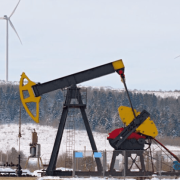⚠️ IMPORTANT LEGAL DISCLAIMER:
The information provided on this page related to Estate Planning is for general informational purposes only and does not constitute legal, financial, or investment advice. Oil and gas laws, mineral rights regulations, and royalty structures vary significantly by state and jurisdiction. While we strive to provide accurate and up-to-date information, no guarantee is made to that effect, and laws may have changed since publication.
You should consult with a licensed attorney specializing in oil and gas law in your jurisdiction, a qualified financial advisor, or other appropriate professionals before making any decisions based on this material. Neither the author nor the publisher assumes any liability for actions taken in reliance upon the information contained herein.
Navigating Estate Planning for Mineral Rights with Dynasty Trusts
Estate planning for mineral rights requires precision and strategic foresight, and dynasty trusts can offer a powerful solution. These trusts combine asset protection, long‑term wealth preservation, and tax planning, making them especially effective for managing mineral assets across generations. This article takes a deep dive into how dynasty trusts can be tailored to mineral rights, helping land and resource owners secure legacy, income, and legal clarity.
Understanding Mineral Rights in Estate Planning
Mineral rights grant ownership and control over subsurface resources such as oil, gas, or precious metals. These rights often hold substantial value—both present and future—even if not currently producing income. However, mineral rights can be overlooked in estate planning, leading to unintended probate, lost income, or ownership disputes.
Common hurdles include unclear title histories, split estates separating surface and subsurface interests, and inactive leases or royalty documentation. Ensuring your estate plan addresses these issues is essential for protecting both value and legacy.
Exploring Dynasty Trusts as a Long-Term Asset Structure
Dynasty trusts are irrevocable trusts designed to preserve wealth indefinitely or for extended periods beyond typical trust durations. They offer a legal structure that allows assets—including mineral rights—to remain under centralized, protected management while bypassing estate and generation‑skipping taxes.
Key advantages include:
- Removal of trust assets from the taxable estate of the grantor and beneficiaries
- Generation‑skipping tax planning across multiple generations
- Protection of assets from creditors or legal claims against beneficiaries
- Direction of management and distribution in line with family values or needs
While dynasty trusts offer robust advantages, they also involve considerations like relinquishing direct control, ongoing administrative complexity, and potential inflexibility if family circumstances change.
Aligning Dynasty Trusts with Mineral Asset Planning
Marrying the power of dynasty trusts with mineral rights planning brings specific benefits:
- Consolidated control: Trust structure centralizes ownership, management of leases, royalty payments, and reinvestment decisions.
- Probate avoidance: Mineral rights titled in the trust transfer seamlessly without court involvement.
- Tax efficiency and growth: Assets grow tax-sheltered, delivering compounded value to future generations.
- Asset protection: Trust assets are insulated from personal liabilities or creditor claims against beneficiaries.
- Directed legacy: Trust provisions ensure trust holdings and distributions align with grantor’s intentions, like funding education or healthcare.
The Importance of Correct Trust Funding for Mineral Rights
Even the most carefully designed trust loses effectiveness if not properly funded. For mineral rights, this means transferring ownership into the trust through executed deeds filed in the appropriate county records. Without this step, probate will likely be required to transfer ownership after death—delaying royalties and incurring legal costs.
Missed funding can lead to costly disruptions and even missed mineral income. Ensuring timely, proper recording of transfer deeds and trust credentials is critical to seamless administration.
Structuring a Mineral-Focused Dynasty Trust
Crafting a dynasty trust that effectively manages mineral rights requires thoughtful structuring:
- Decide trust type: Irrevocable dynasty trust is needed for estate tax and asset protection benefits. Revocable structures may offer flexibility, but include assets in taxable estate.
- Define distribution policies: Establish conditions or milestones for beneficiary access, such as education, medical need, or stewardship responsibilities.
- Appoint the right trustee: Preferably a professional or firm with experience in mineral administration and long-term fiduciary management.
- Plan for adaptability: Incorporate provisions for adding newly acquired mineral interests or adjusting to shifting family and legal conditions.
- Coordinate with mineral management: Enable trustee to oversee lease negotiations, division orders, royalty tracking, and payments.
Integrating Tax Strategies with Mineral Dynasty Trusts
Tax planning is a cornerstone of dynasty trust utility:
- Estate and gift taxes: Transferring mineral rights into the trust at formation can utilize exemptions to reduce future estate burden.
- Generation‑skipping tax planning: Designating gift and exemption amounts can shield trust assets from heavy taxation across generations.
- Income taxation: In grantor trust scenarios, the creator pays tax on income, allowing the trust to grow tax-deferred. Non‑grantor structures place tax burden on trust or beneficiaries.
- Resource depletion allowance: Applicable deductions for mineral depletion can reduce tax liability on trust income.
Coordination with qualified estate and tax professionals ensures compliance and maximizes benefits.
Administrative Best Practices for Trust Longevity
Maintaining a dynasty trust tied to mineral assets requires diligence:
- Annual accounting and production reporting: Document income, expenses, and royalty statements.
- Title and lease monitoring: Regularly update ownership records and lease agreements.
- Record keeping: Preserve clear documentation on trust terms, distributions, and asset performance.
- Beneficiary communication: Establish transparency through periodic reports or trustee–beneficiary meetings.
- Legal and tax review: Monitor regulatory changes affecting trust duration, taxation, or mineral rights law.
Transparent governance fosters functional trust operations over generations.
Addressing Common Concerns and Risks
While robust, the dynasty trust structure comes with challenges:
- Permanent control loss: Once funded, grantor cannot change terms or regain assets.
- Legal complexity and costs: Drafting and maintaining a long-term trust can be expensive and administratively intensive.
- Jurisdictional limitations: Some states impose duration limits; choosing a favorable jurisdiction is key.
- Family discord: Trust expectations and distribution terms must be clearly communicated to avoid misunderstandings.
- Tax law shifts: Future changes may alter tax advantages.
Thorough planning and periodic reviews help mitigate these risks.
Learning from a Practical Example in Mineral Trusts
Consider a family with multiple oil leases across jurisdictions—title history unclear across generations. By partnering with estate attorneys, they:
- Documented all mineral ownership records and leases
- Consolidated these interests into a dynasty trust
- Structured custom distribution rules and lease assignment protocols
- Ensured trust funding via properly recorded deeds
- Protected royalty income and aligned estate, tax, and management efficiencies
This approach provided legal clarity, avoided inter-family disputes, preserved fruitful assets, and set the framework for multi-generational stewardship.
Guiding Principals for Families Considering Mineral Dynasty Trusts
For individuals contemplating this strategy:
- Include all mineral rights in estate assessment and inventory
- Consult specialized attorneys for trust drafting and jurisdiction analysis
- Collaborate with tax advisors to optimize transfer timing, structure, and exemption usage
- Choose a trustee with mineral and fiduciary expertise
- Communicate trust purpose, terms, and expectations openly with beneficiaries
- Schedule regular reviews for legal and operational adjustments
Preserving Heritage Through Trust-Driven Mineral Stewardship
Estate planning with dynasty trusts allows mineral rights owners to create a legacy playbook—preserving wealth, empowering future stewards, and aligning resource management with values. With the right structure, funding, and governance, trusts can ensure that mineral assets continue benefiting families and communities, uninterrupted and protected, for generations.
Do you have any questions related to Estate Planning? Feel free to contact us here.










